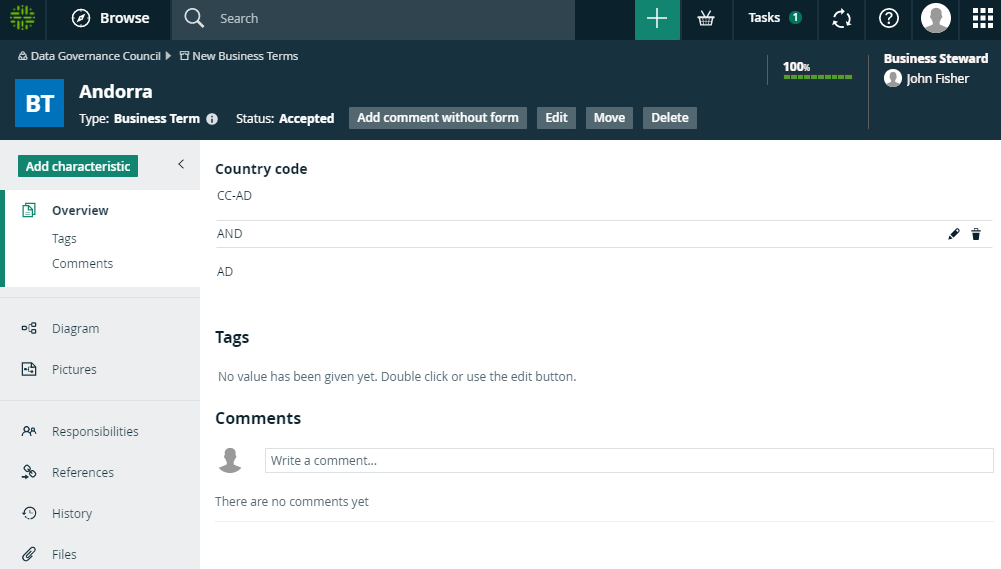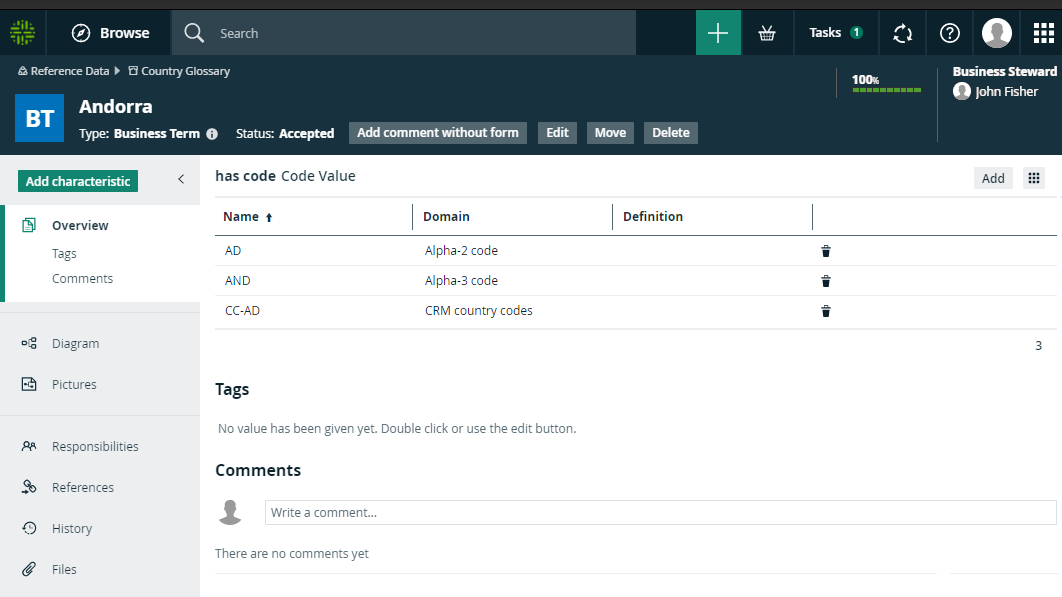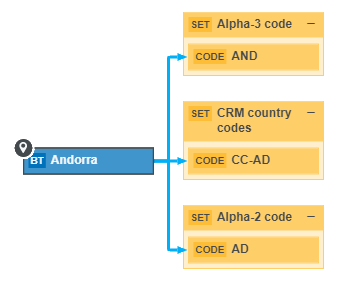There are several general approaches to the management of reference data:
- Represent the code values as attributes of a Business Asset.
- Use relations between Code Value assets and Business Terms.
Choose an option below to explore the documentation for the latest user interface (UI) or the classic UI.
Approach 1: Code values as attributes of Business Assets
Prerequisites
- You have created a new asset type to use as the reference point for information about the code value. This is typically a child asset type of Business Asset or Business Term.
- You have created or imported assets of your new asset type for all code values.
- You have created a custom attribute type for each code set, for example ISO-2-digit, ISO-3-digit, and ISO Numeric.
- You have assigned the custom attribute types to the new asset type.
Approach
For each of the assets that represent a code value, enter the code values in the relevant attribute.
Example

Advantages
This approach provides a simple overview of all code values on the asset page, which can suffice if the following conditions are met:
- The code sets are very stable.
- You will not add new code sets.
- The code values do not need to traced to other assets.
- You don't want to reuse the codes for other assets.
Disadvantages and limitations
This approach doesn't allow for traceability:
- You can't see that the 2-digit country code is a value from a code set, or a column in a database.
- You can't easily see for which other assets each 2-digit country code is used.
- You can't link the 2-digit country codes to 3-digit country codes. As a consequence, you also cannot represent transformation logic.
- Each code set requires a different attribute type.
- The code sets are hard to maintain, especially if the code values are updated, for example an existing value is changed or a new code value is added,
Approach 2: Code values as assets with a relation to Business Terms
Prerequisites
- You have created Business Term assets for all code values.
- You have imported all Code Value assets, for example the ISO-2-digit, ISO-3-digit, and ISO Numeric data.
- You have created a Code Set asset for each code set.
- You have created relations of the type "Code Value is part of / contains Code Set" between the Code Value assets and the Code Set assets.
Approach
For each of the Business Term assets, you can create a relation of the type "Business Term has code / is code for Code Value" to the equivalent Code Value assets.
Example

Traceability
Advantages
- You don't have to make any changes to the asset types or attribute types.
- Each code value is an asset in itself, so you can manage it accordingly. For example, you can assign responsibilities and approve the Code Value assets with workflows.
- You can link each Code Value asset to multiple Business Assets.
- You can create new Code Values assets when required, without having to create or edit attribute types.
- You can use traceability diagrams to visualize the links between the Business Assets and the Code Value assets.
Disadvantages and limitations
- You need to create Business Assets for all code values.
- If you also need relations between the equivalent Code Value assets, you need a lot of relations.